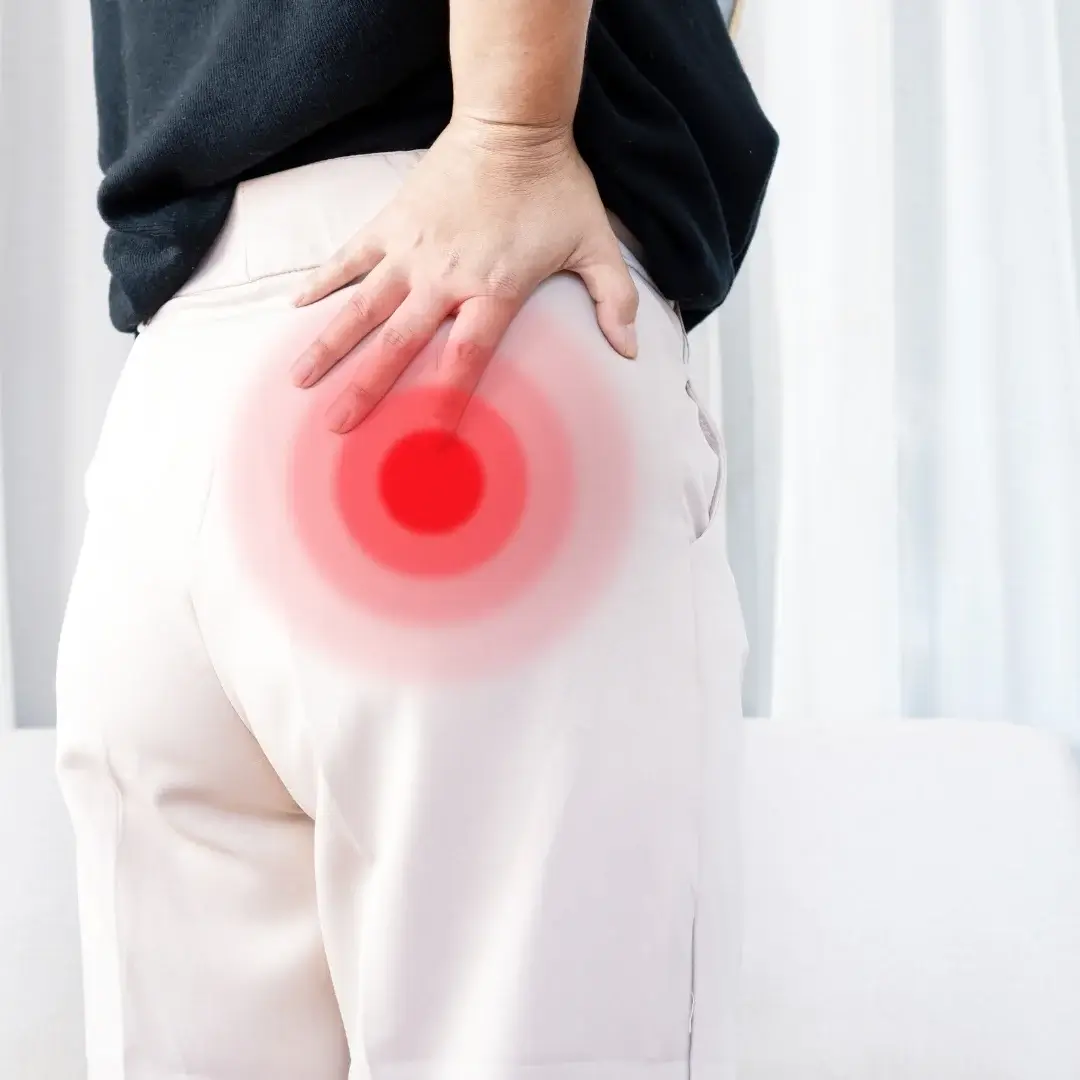Overview:
Snapping hip syndrome is a condition characterised by a snapping or popping sensation in the hip joint during movement, often accompanied by audible sounds. This condition typically arises due to the tendons or muscles moving over bony structures in the hip, resulting in friction and audible snapping.
Anatomy:
The hip joint is a ball-and-socket joint formed by the femur (thigh bone) and the acetabulum (socket) of the pelvis. Surrounding the hip joint are several tendons, ligaments, and muscles that facilitate movement and stability. Snapping hip syndrome can involve different structures, including the iliopsoas tendon, iliotibial (IT) band, or hip abductors.
Causes:
Snapping hip syndrome can occur due to various factors, including:
- Iliopsoas Tendon Snapping: The iliopsoas tendon, which passes over the front of the hip joint, may snap over bony prominences during hip flexion or extension.
- Iliotibial Band Snapping: The iliotibial (IT) band, a thick band of connective tissue running along the outside of the thigh, may snap over the greater trochanter of the femur during hip movement.
- Hip Abductor Snapping: The tendons of the hip abductor muscles, such as the gluteus maximus or tensor fasciae latae, may snap over the bony prominence of the hip joint during abduction or external rotation.
Symptoms:
Snapping hip syndrome may present with the following symptoms:
- Snapping Sensation: Audible snapping or popping sensation in the hip during movement, such as walking, running, or swinging the leg.
- Pain or Discomfort: Some individuals may experience mild discomfort or pain in the hip area, particularly with repetitive movements or prolonged activity.
- Swelling or Inflammation: Inflammation of the affected tendons or bursae may lead to localised swelling or tenderness over the hip joint.
- Limited Range of Motion: Snapping hip syndrome can sometimes restrict hip movement, leading to a reduced range of motion or stiffness.
Diagnosis:
Diagnosis of snapping hip syndrome involves a thorough medical history, physical examination, and, in some cases, imaging studies such as X-rays or magnetic resonance imaging (MRI). During the physical examination, healthcare providers may perform specific manoeuvres to reproduce the snapping sensation and assess for associated signs of inflammation or tendon dysfunction.
Treatment:
Treatment for snapping hip syndrome depends on the underlying cause and severity of symptoms:
- Conservative Measures: Conservative treatments are often effective in managing mild to moderate cases of snapping hip syndrome and may include:
- Activity Modification: Avoiding activities that exacerbate symptoms, such as repetitive hip flexion or extension movements.
- Rest and Ice: Resting the affected hip and applying ice packs to reduce pain and inflammation.
- Physical Therapy: Performing targeted stretching and strengthening exercises to improve flexibility, muscle balance, and biomechanics.
- Anti-Inflammatory Medications: Nonsteroidal anti-inflammatory drugs (NSAIDs) may help alleviate pain and reduce inflammation.
- Corticosteroid Injections: In cases of persistent or severe symptoms, corticosteroid injections may be administered directly into the hip joint or around inflamed tendons to provide temporary pain relief and reduce inflammation.
- Surgical Intervention: Surgical intervention is rarely necessary for snapping hip syndrome and is typically reserved for cases that do not respond to conservative treatments or involve structural abnormalities requiring correction.
Outlook/Prognosis:
The prognosis for snapping hip syndrome is generally favourable with appropriate treatment and rehabilitation. Most individuals experience significant improvement in symptoms with conservative measures, such as activity modification, physical therapy, and anti-inflammatory medications. However, persistent or severe cases may require further evaluation by a healthcare provider to explore alternative treatment options or address underlying structural issues contributing to symptoms. By adhering to treatment recommendations and implementing preventive measures, individuals can effectively manage snapping hip syndrome and minimise the risk of recurrence.

